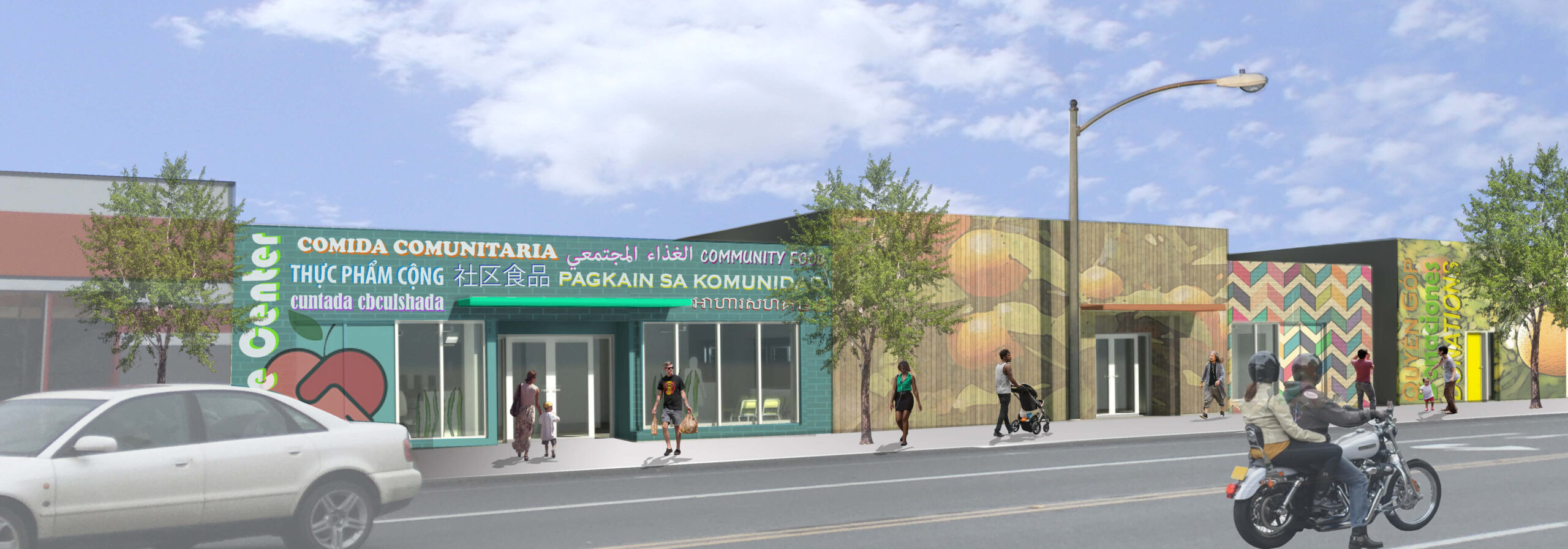White Center Food Bank
It takes a village
A neighborhood food hub where everyone belongs
Sitting between West Seattle and Burien, the neighborhood of White Center has long been an affordable multilingual multiethnic haven for families, immigrants, refugees, and working-class residents. But the relentless high cost of living has sent the neighborhood into an all too familiar equity crisis – how will it maintain its vibrant community while building for the future? The White Center Food Bank has long outgrown its original location with this increased demand. Once the county proposed using their site for affordable housing, leaders took this opportunity to expand and purchase a more central, visible, and accessible location in the neighborhood core. With equity, accessibility and dignity as guiding principles, the food bank’s capital campaign utilized its deep layers of community: residents, volunteers, customers, government agencies, non-profits, donors all had to chip in. “Providing nutritious food for everyone who needs support takes our entire community.”
The adaptive reuse and remodel of the three adjacent one-story warehouses in poor condition required substantial upgrades to not only comply with current codes but also meet the needs of a welcoming, comprehensive, and dignified neighborhood food hub. Working with existing conditions and lessons learned from traditional food distribution models, the program layout ensures privacy and flow between public and customer, customer and volunteer, volunteer and staff. As community resource hubs face the difficulties of changing demographics, displacement, and alienation, the food bank emphasized the need for more space for volunteer and staff training, as well as flex event space to steward community joy, trust, education, and commerce. A mural of beloved neighborhood residents and volunteers with an abundant fresh fruits and vegetables by Jake Prendez and Rafa Diaz, of Nepantla Cultural Arts Gallery, adorns the main entrance.
Status Complete
Size 10,000 sf




